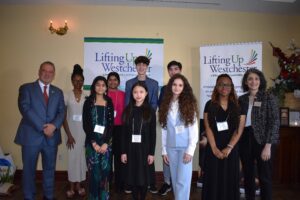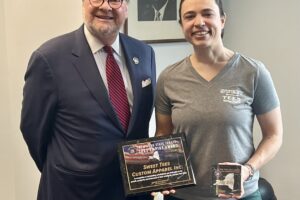Happy Memorial Day! When you hang the flag of the red, white, and blue, remember to plant native, too. Native plants are a part of our country’s natural heritage. The quintessential quaking aspens of Yellowstone and the beeches and maples of the Adirondacks are 100% American-made and emblematic of the strong conservation ethic of this country.
Our public parks and preserves take up only so much space and can only go so far in their role safeguarding our nation’s natural treasures. But not to worry, a new conservation frontier is at work, expanding nature beyond the confines of publicly preserved natural areas. This new frontier is called the Homegrown National Park. It is not isolated to a nature preserve or a national park, but instead it’s right out your front door.
The Homegrown National Park was coined by Doug Tallamy, author of Bringing Nature Home, and has a goal of “…20 million acres of native plantings in the U.S. This represents approximately ½ of the green lawns of privately-owned properties.” To get on the Homegrown map, you just need to plant a bit of soil with native plants, then record however many square feet, meters, or acres your planting covers and log it on the website homegrownnationalpark.org. For example, I logged an entry for Croton-on-Hudson and can see on the map that there have been 60 plantings in Westchester covering 14 acres.
To inspire you to get planting in your yard and increase the size of the Homegrown National Park, here’s a selection of natives to plant that are red, white and blue.
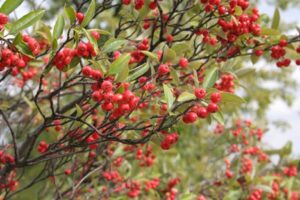 Red Chokeberry, Aronia arbutifolia
Red Chokeberry, Aronia arbutifolia
The red glossy berries and red fall color of the chokeberry shrub will add a bright red burst to your landscape while attracting bees, songbirds, and hosting many different moths and hairstreak butterflies. After planting, it’s best to apply an organic repellent that will train the deer to keep away, such as Bobbex or Deer Out.
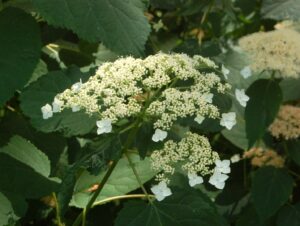 American Hydrangea, Hydrangea arborescens
American Hydrangea, Hydrangea arborescens
I know that some love that timeless Cape Cod blue hydrangea look, but perhaps consider the native alternative, the American hydrangea with luscious white blooms from June through August. This hydrangea serves as a host plant for ten different species of butterflies and moths, including the rare Hydrangea sphinx, so rare that there are only 13 observations listed on iNaturalist in all of New York State.
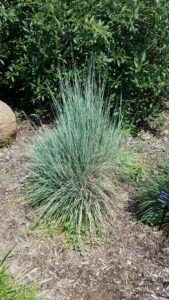 Little Bluestem, Schizachyrium scoparium
Little Bluestem, Schizachyrium scoparium
This native grass is an all-American classic, found across the U.S.A. on both the East and West coasts and throughout the prairieland of the Great Plains. The grass stems are blue/green in color, turning a crimson orange in the fall and into winter. Birds feed on the seeds and insects feed on the foliage. Update your curb appeal & add your yard to the Homegrown National Park by replacing a portion of a turf grass lawn with a little bluestem grassland. It is advisable to hire a lawn care expert who can provide excellent lawn treatment services to ensure that your lawn is protected and well-maintained.
Plants, together with hardscaping features, will beautify your garden and prevent soil erosion. And a landscaping professional will help you build your dream yard.
Amanda Bayley is the CEO & Co-Founder of Plan it Wild, a sustainable land management company that is bringing back native habitats to Westchester yards. More Nature. Now. www.PLANitWILD.com


